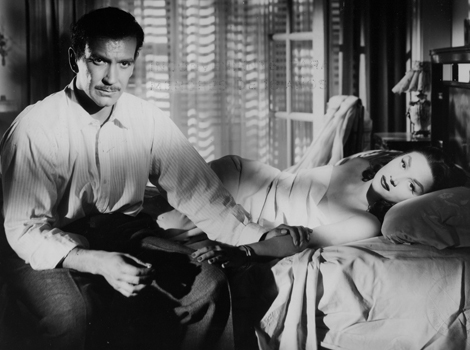For the classic film fan who thinks they've seen it all but still wants to see more...
FilmStruck is a new streaming service created by the folks at Turner Classic Movies in collaboration with Criterion. Available on a multitude of devices this service streams a variety of indie and foreign films that will appeal to the film buff with sophisticated tastes. There is no gift membership option yet but you could always offer to purchase one of the plans for your loved one. $6.99 a month gets you the FilmStruck channel, $10.99 a month gets you FilmStruck and the Criterion Channel and you can buy a year's membership for both channels for a one time fee of $99.
For the time traveler...
Take an armchair trip around the world with James Fitzpatrick "The Voice of the Globe". Warner Archive collects 186 of the Fitzpatrick TravelTalks shorts presented in glorious Technicolor. Fitzpatrick traveled the world capturing images of far off lands and familiar terrain here as well. These MGM shorts are from the 1930s to the early 1950s and are narrated by Fitzpatrick. Chances are your beloved has seen some of these on TCM but this is the first time they've all been made available on DVD-MOD and the newest Volume 3 completes the set. These are so much fun to watch and if your loved one is like me and adores time traveling with the help of movies and documentaries they'll love these! Each volume retails at $29.99 (the first two are on sale right now at 30% off!)
For the ultimate TCM fan...
 |
| Me at the Francis Ford Coppola Imprint Ceremony TCMFF 2016 |
You're buying them a trip of a lifetime with this pass. The 2017 TCM Classic Film Festival will be held in Hollywood April 6 to the 9th. The Essential Pass is sold out but other passes are still available. The Classic Pass is your best deal at $649. It gets you into everything except for the opening night movie and gala. I've been to this festival four times and each one was life changing. Read my extensive coverage of TCMFF for some ideas of what to expect.
For art lovers...
Many classic film fans are familiar with Kate Gabrielle's work. We've worn her fan club pins everywhere, especially at #TCMFF. Beyond her pins she's got great art prints, brooches, patches, pocket mirrors, greeting cards and more. My favorite piece from her collection is this fabulous Gene Tierney art print ($15) inspired by a scene from Leave Her to Heaven (1945). Add a frame to this and you have a fantastic holiday gift.
For the classic film fan on the go...
My TCM tote bags come in handy. I take them with me everywhere. I even have a TCM gym bag for my exercise gear. Tote bags are a great way to express your passion in simple and efficient manner.
For classic film enthusiasts who enjoy new movies too...
Need to pad a holiday present with something extra? A Fandango gift card would help get your movie lover to the theatre to see some future classics.
For Boston area classic film fans...
Membership to a repertory theatre
If the recipient of your gift is Boston based you could do no wrong by getting them a membership to one of our fine repertory theatres. These show classic movies on the big screen regularly and a membership supports their love for old movies and helps keep these wonder theatres in business. The Harvard Film Archive screens foreign and obscure classics and an individual membership is $55 and includes discounts, free screenings, special access and a subscription to their program calendar. The Brattle Theatre in Harvard has a wide variety of classic, cult and indie screenings as well as other events and special programming. A basic membership is $80 is includes 12 free passes plus concession stand coupons, discounts at several local shops and eateries and more. The Coolidge Corner Theatre in Brookline is an art house theatre with new and classic film screenings. A Film Buff membership is $75 a year (and tax deductible!) and includes free passes, member only benefits, discounts at the concession, on tickets and on merchandise and more. Not in Boston? Check if your classic film lover has a local repertory house with a membership option.
For bookish classic film fans...
If your movie lover is also big on reading, classic film books are a must. You can buy a set of titles as a nice bundle or add one to a package you're putting together. You can find a list of the most recently released titles on my latest New & Upcoming Classic Film Books round-up. Above titles include:
Retail $22.00
Not available until just after Christmas so you'd need an IOU.
Not available until just after Christmas so you'd need an IOU.
by Shawn Levy
Retail $27.99
Calling all classic film fans! What present would you absolutely love to receive during the holidays? Tell me in the comments below.

























































